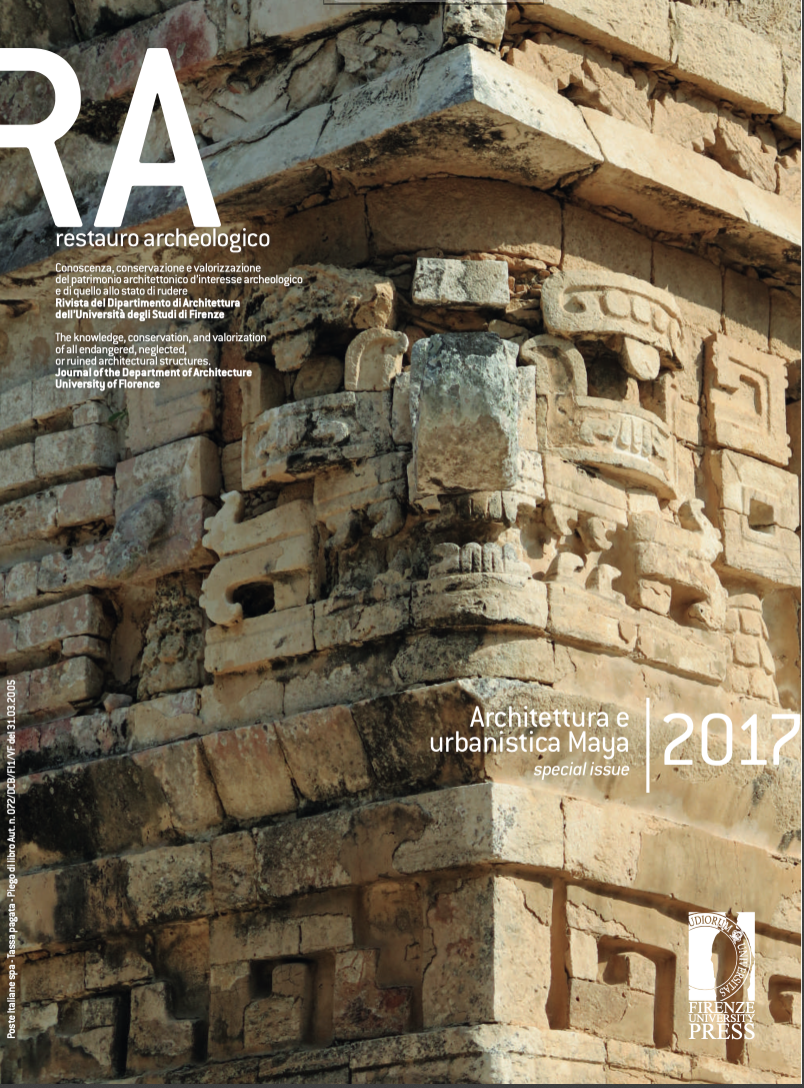Published 2017-11-22
Keywords
- Architecture,
- Mural,
- Maya,
- Archeometry
How to Cite
Abstract
Maya architecture was one of the most widely employed backdrops for the colour, and this application extended over a continuous period from the Mid-Preclassic period to the end of the Late Postclassic. The principal buildings of the Maya Lowlands were covered with stucco layers and painted with a rich colour palette that included pigments and colorants, and its archaeometric study offers important information on lime technology and colour technology between ancient Maya. On the other hand, these studies are necessaries for the conservation and restoration of Maya architecture and its polychrome decoration. Some of the analytical techniques more employed in these studies are Optical Microscopy (LM), Scanning Electronic Microscopy combined with energy dispersive X-ray (SEM/EDX), X-Ray Diffraction (XRD), Fourier Transform Infrared spectroscopy (FT-IR) or Chromatographic Techniques (GC/MS; Pyr-GC/MS; HLPC).


